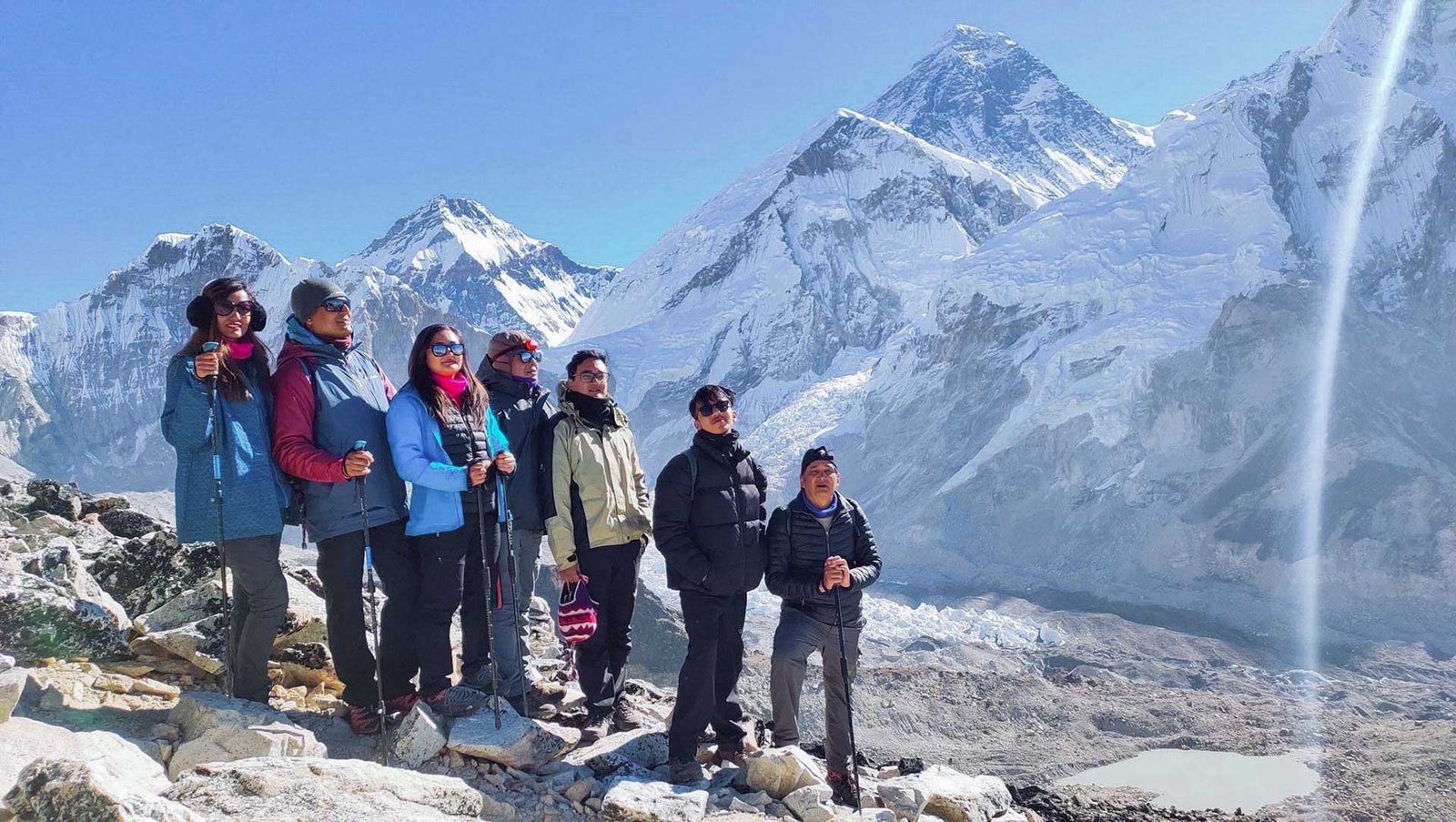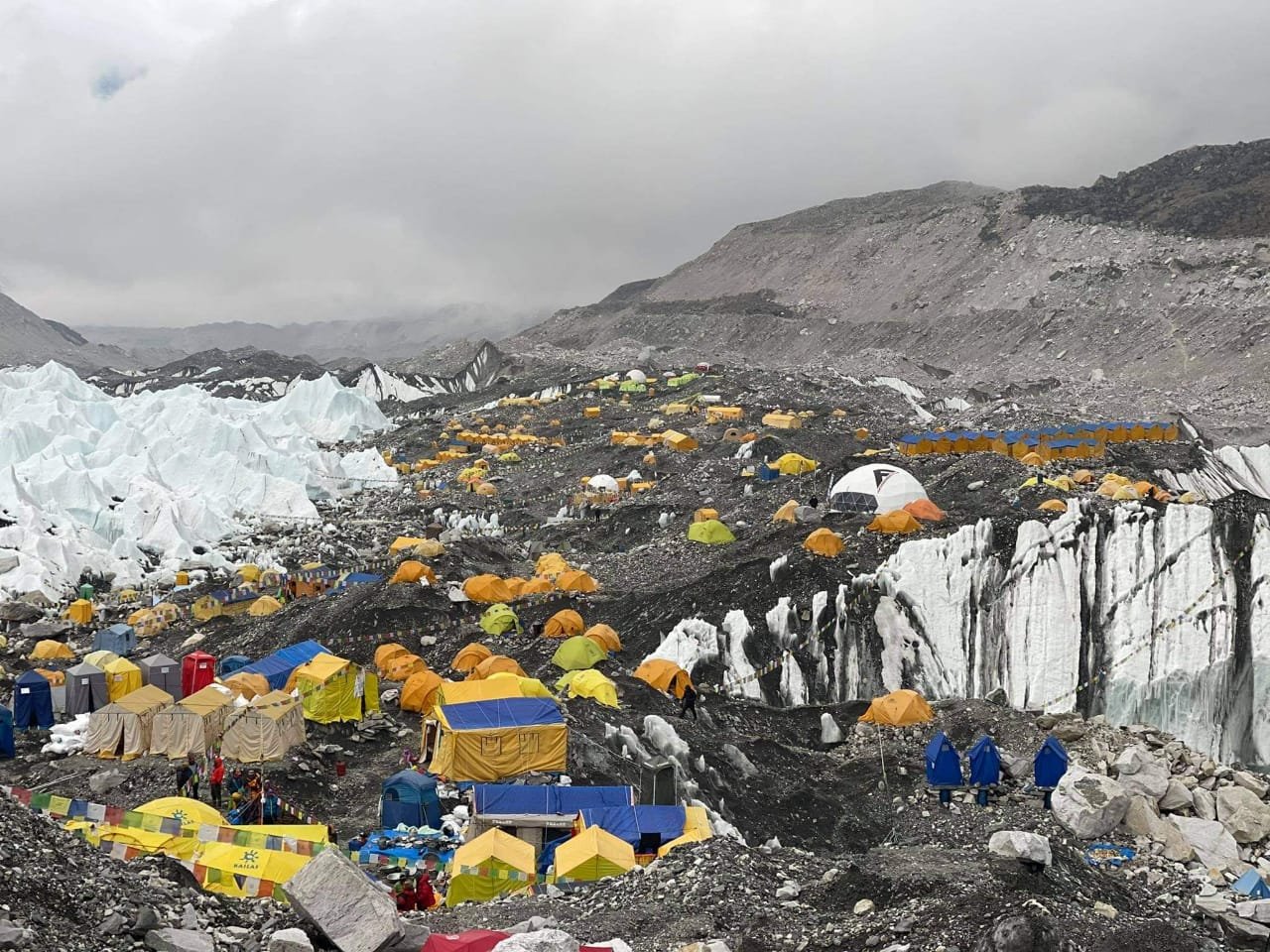Planning a Base Camp Tour With Kids

Organizing a base camp outdoor experience specifically for kids requires extensive planning and consideration. Here’s a detailed guide on how to go about it:

1. Location Selection:

- To ensure accessibility and proximity to nature, select a base camp location close to nature attractions like forests, mountains or lakes.
- Check for kid-friendly features like comfortable weather, camping-friendly activities (nature studies, stargazing), and access to essentials (water, restrooms).
- Sites near national parks, natural reserves or lakes provide activities like canoeing, fishing, or wildlife watching.
2. Accomodation Options:
Tents:
- Best for campers who enjoy outdoor ambiance and adventure.
- Pick spacious tents with waterproof coating, durable poles and resistant fabrics.
- Carry rainwear, tarps and extra gear for unpredictable weather.
Cabins and Lodges:
- Optimal for beginners and young groups seeking comfort and safety.
- Check for cozy spaces, heat sources (fire pits or heating units), and creature-proof measures.
- Ensure availability of basic amenities like running water, cooking facilities and satellite communication tools.
3. Activities and Campsites Preparation:
Activities:
- Include engaging activities for children like nature observations, hikes in designated areas, age-appropriate scavenger hunts and star charts.
- Assign role-call officers, safety monitors and backpackers to keep them organized.
Campsite Preparedness:
- Provide well-equipped huts and furnished campsites for kids.
- Supply insulated mats, hiking sticks or backpacks and basic survival tools.
- Equip team leads with navigation tools, first aid kit and a survival guide.
4. Transportation:
Buses or Vans:
- Arrange buses or vans for transport from home to base location, if accessible via public transport.
- Make transport arrangements to ensure easy transit between base camp and activity areas.
Vehicles:
- For groups with secure vehicle access, allocate vehicles for transportation.
- Include individual vehicles as backup for emergencies.
5. Supervision and Safety:
Supervision:
- Designate dedicated supervisors for each group of kids.
- Provide group supervisors with necessary skills like basic navigation, first aid and emergency contact information.
Safety Precautions:
- Ensure all children carry and display an ID badge with emergency contact details.
- Brief the group on base camp-specific rules and regulations.
- List contact information and maps of the area at base camp.
6. Food & Water Logistics:
Food and Water Preparation:
- Include balanced meals with outdoor-appropriate nutritional value.
- Adequate food supplies must be available on base.
Storage and Consumption:
- Set up food storage containers to prevent wildlife attraction.
- Provide designated areas for meal preparation and consumption.
Water Supply:
- Equip a first aid station with enough sterile water for emergency treatment.
- Provide refill stations for water containers.
7. Campfire and Cooking Support:
Campfires:
- Teach kids to build fires safely, respecting fire containment codes.
- Ensure adult supervision at all times.
Cooking Resources:
- Supply cooking materials (strainers, pots, pans) and fuel (propane or firewood) for meal preparation.
- Count and label food supplies appropriately, keeping them sealed in containers.
8. Health and Sanitation:
Restrooms:
- Ensure clean restrooms with handwash stations and soap supplies.
- Allocate restrooms for specific use intervals.
Waste Disposal:
- Create a designated waste disposal site.
- Provide labeled bins for organic and non-organic waste.
Medical Support:
- Establish a medical center with necessary supplies for emergency treatment.
- Recruit a designated medical professional for constant supervision.
9. Weather Conditions:
Weather Safety:
- Check for weather patterns and provide weather-appropriate clothing, such as raincoats, hats, gloves or snowboots.
- Plan for potential weather shifts with backup clothing and safety measures.
Emergency Weather Contingencies:
- Develop weather emergency contingencies, including evacuation plans and weather-resilient activity options.
10. Base Camp Culture and Connection:
Base Camp Culture:
- Create a community-based camp culture with daily reflections, talent sharing and shared experiences.
- Ensure participation of everyone in group activities and decision-making, fostering a sense of belonging.
Technology Access:
- Manage creation of a base camp-dedicated social media group to share experiences and connect with others.
Behavior and Etiquette:
- Encourage kids to follow designated behavior and etiquette within the base camp, including proper hygiene protocols, respectful interaction and a shared outdoor experience code of conduct.# Everest For The Young: Planning A Base Camp Tour With Kids
Executive Summary:
Embarking on an Everest Base Camp Trek with youngsters opens up a wealth of incredible experiences and personal growth opportunities. However, careful planning and considerations are essential to ensure a safe and fulfilling adventure.
Introduction:
Exploring the majestic Himalayas and witnessing the world’s highest peak, Mount Everest, can ignite a profound sense of wonder and appreciation for the natural world in young minds. If you’re considering embarking on this extraordinary journey with your family, thorough preparation is key. Here are crucial aspects to consider when planning an Everest Base Camp tour with kids.
Safety:
Altitude Acclimatization: Gradually adjusting to the higher altitude is paramount. Allow ample time for acclimatization, incorporating rest days and avoiding strenuous activities initially.
Medical Preparedness: Carry a well-stocked first aid kit and essential medications. Consult your healthcare provider for altitude-related concerns and preventive measures.
Equipment and Clothing: Pack warm, waterproof layers, sturdy footwear, and sun protection gear. Ensure adequate clothing for various weather conditions.
Itinerary:
Choosing the Right Route: Consider the difficulty level, duration, and scenic beauty of different routes. Shorter treks like the Everest Base Camp Express Route may be ideal for beginners or families with younger children.
Start and End Points: Determine the most suitable starting and ending points for your trek, considering accessibility, transportation options, and the overall route.
Acclimatization Treks: Incorporate acclimatization treks leading up to the main ascent to allow your body to gradually adapt to higher altitudes.
Activities:
Exploring Local Villages: Immerse yourself in the rich Sherpa culture by visiting local villages and engaging with the friendly locals. Encourage your kids to interact with peers, learn about their way of life, and appreciate the simplicity of rural living.
Exploring Monasteries and Heritage Sites: Visit ancient monasteries and historical sites along the way, providing opportunities for cultural enrichment and lessons in history and religion.
Yoga and Meditation Sessions: Embrace the tranquility of the Himalayas by including yoga and meditation sessions during acclimatization breaks. Teach your kids simple breathing techniques and mindfulness practices to help them connect with their inner selves and the surrounding nature.
Family Bonding:
Encourage Communication and Reflection: Encourage open communication and reflection during the trek, allowing family members to share their experiences, fears, and aspirations. Use mealtimes and breaks as opportunities for meaningful conversations and bonding moments.
Assign Responsibilities: Allocate age-appropriate responsibilities to your kids, such as helping pack backpacks, managing snacks, and navigating with a map. This helps foster independence and a sense of accomplishment.
Capture Memories: Document your family’s journey through photographs, videos, and travel journals. Encourage your children to capture their experiences from their unique perspectives, creating lasting memories of their Himalayan adventure.
Conclusion:
Organizing an Everest Base Camp trek with kids can be a transformative experience for families. By prioritizing safety, crafting a well-researched itinerary, engaging in meaningful activities, and fostering family bonding, you’ll create cherished memories while nurturing a profound appreciation for the natural world and the diversity of cultures.
Keyword Phrase Tags:
- Everest Base Camp trek with kids
- Family adventure travel
- High altitude trekking with children
- Acclimatization and safety for kids
- Cultural and educational experiences
